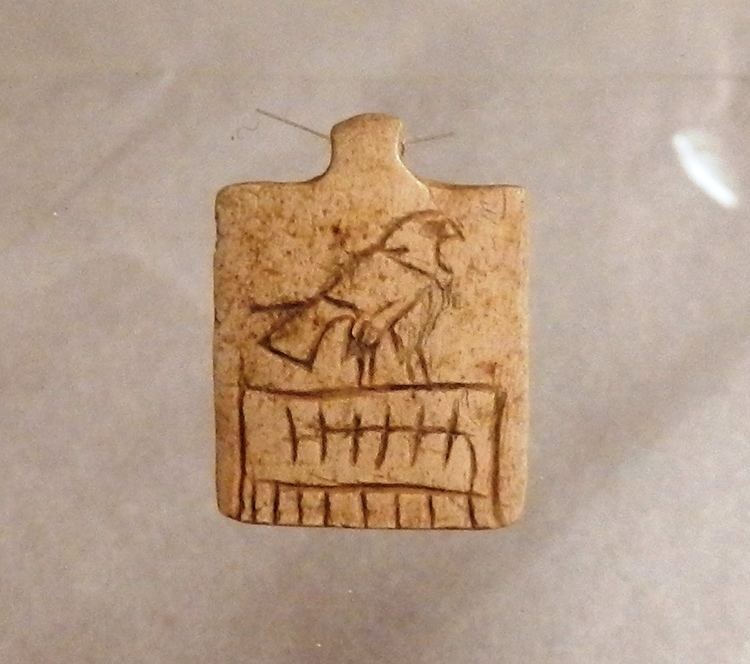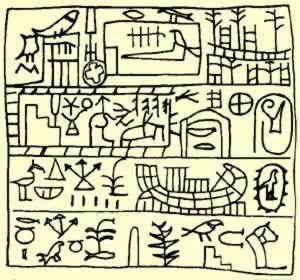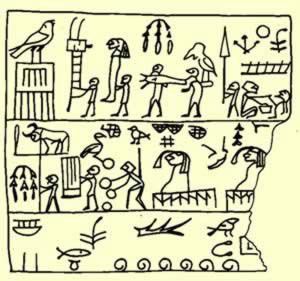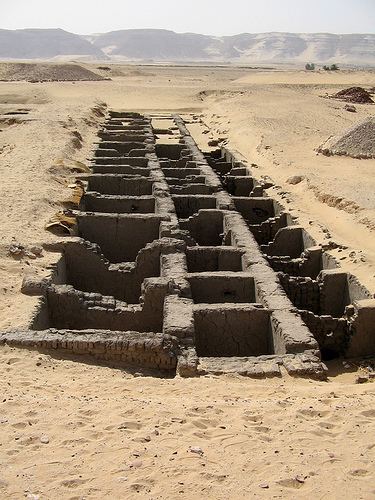Reign 41 years, ca. 3000 BC Buried Umm El Qa'ab, Egypt | Died 3040 BC | |
 | ||
Similar | ||
Pharaoh djer
Djer is considered the third pharaoh of the First Dynasty of ancient Egypt in current Egyptology. He lived around the mid-thirty-first century BC and reigned for c. 40 years. A mummified forearm of Djer or his wife was discovered by Flinders Petrie, but was discarded by Emile Brugsch.
Contents

Name

The Abydos king list lists the third Pharaoh as Iti, the Turin Canon lists a damaged name, beginning with It..., while Manetho lists Uenéphes.
Length of reign

While the Egyptian priest Manetho, writing in the third century BC, stated that Djer ruled for 57 years, modern research by Toby Wilkinson in Royal Annals of Ancient Egypt stresses that the near-contemporary and therefore, more accurate Palermo Stone ascribes Djer a Reign of "41 complete and partial years." Wilkinson notes that years 1-10 of Djer's reign are preserved in register II of the Palermo Stone, while the middle years of this pharaoh's reign are recorded in register II of Cairo stone fragment C1.
Reign
Djer's reign was preceded by a regency controlled by Neithhotep, possibly his mother or grandmother.
The evidence for Djer's life and reign is:

The inscriptions, on ivory and wood, are in a very early form of hieroglyphs, hindering complete translation, but a label at Saqqarah may depict the First Dynasty practice of human sacrifice. An ivory tablet from Abydos mentions that Djer visited Buto and Sais in the Nile Delta. One of his regnal years on the Cairo Stone was named "Year of smiting the land of Setjet", which often is speculated to be Sinai or beyond.
Manetho claimed that Athothes, who is sometimes identified as Djer, had written a treatise on anatomy that still existed in his own day, over two millennia later.
Family
Djer was a son of the pharaoh Hor-Aha and his wife Khenthap. His grandfather was probably Narmer. Djer fathered Merneith, wife of Djet and mother of Den. Women carrying titles later associated with queens such as Great One of the Hetes-Sceptre and She who Sees/Carries Horus were buried in subsidiary tombs near the tomb of Djer in Abydos or attested in Saqqara. These women are thought to be the wives of Djer and include:
Tomb
Similarly to his father Hor-Aha, Djer was buried in Umm el-Qa'ab at Abydos. Djer's tomb is tomb O of Petrie. His tomb contains the remains of 318 retainers who were buried with him. During later times, the tomb of Djer was revered as the tomb of Osiris, and the entire First Dynasty burial complex, which includes the tomb of Djer, was very important in the Egyptian religious tradition.
Several objects were found in and around the tomb of Djer:
In the subsidiary tombs excavators found:
Manetho indicates that the First Dynasty ruled from Memphis – and indeed Herneith, one of Djer's wives, was buried nearby at Saqqara.
